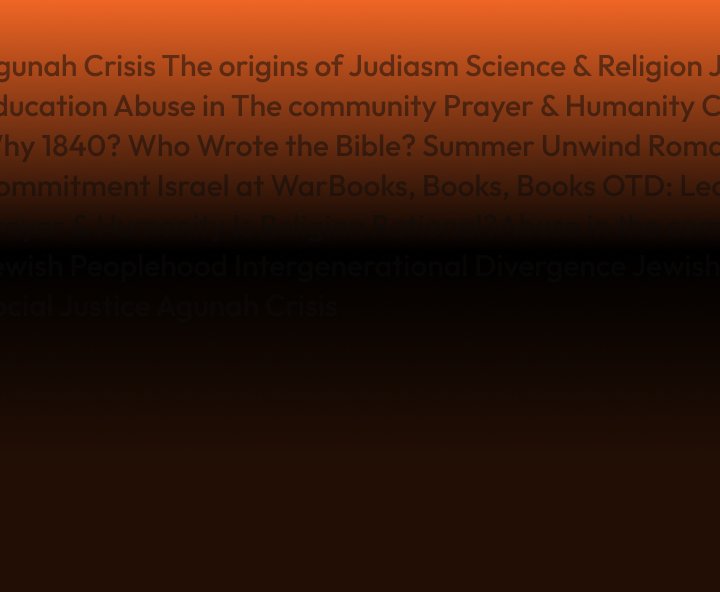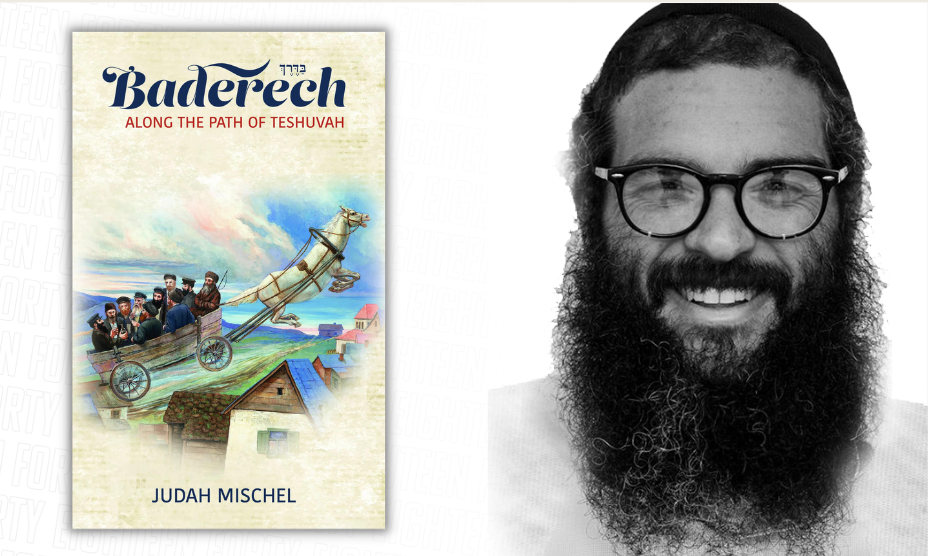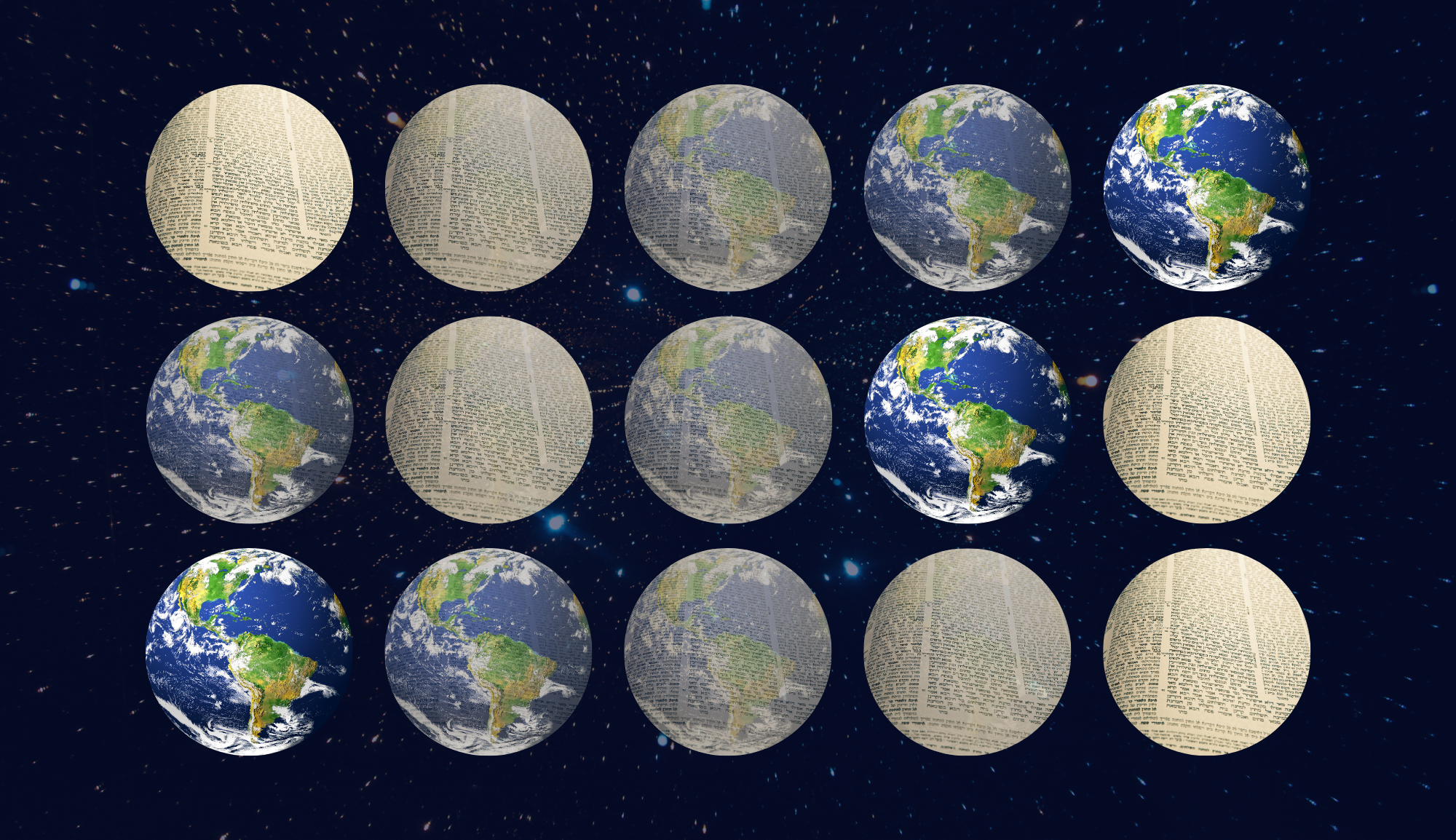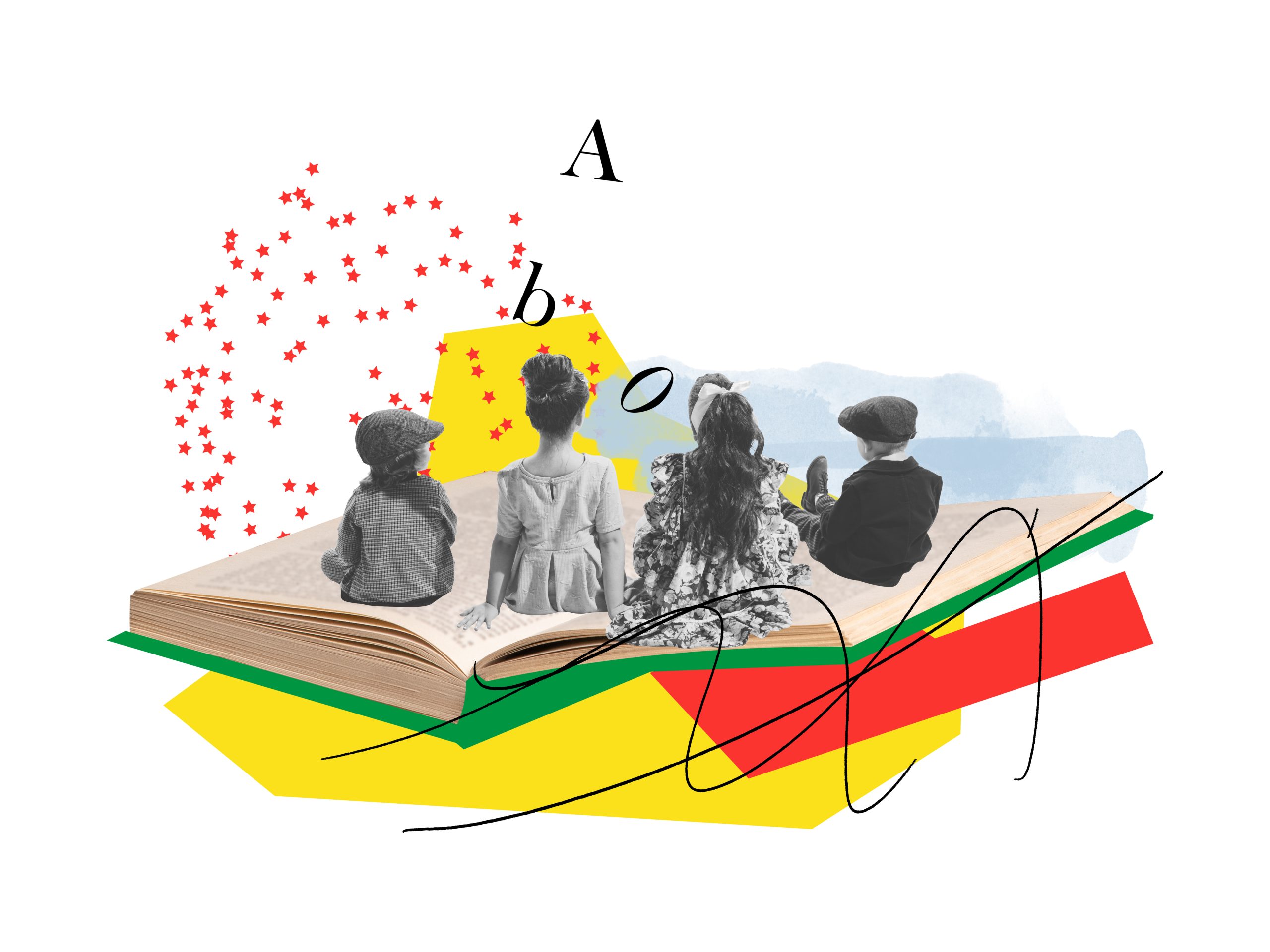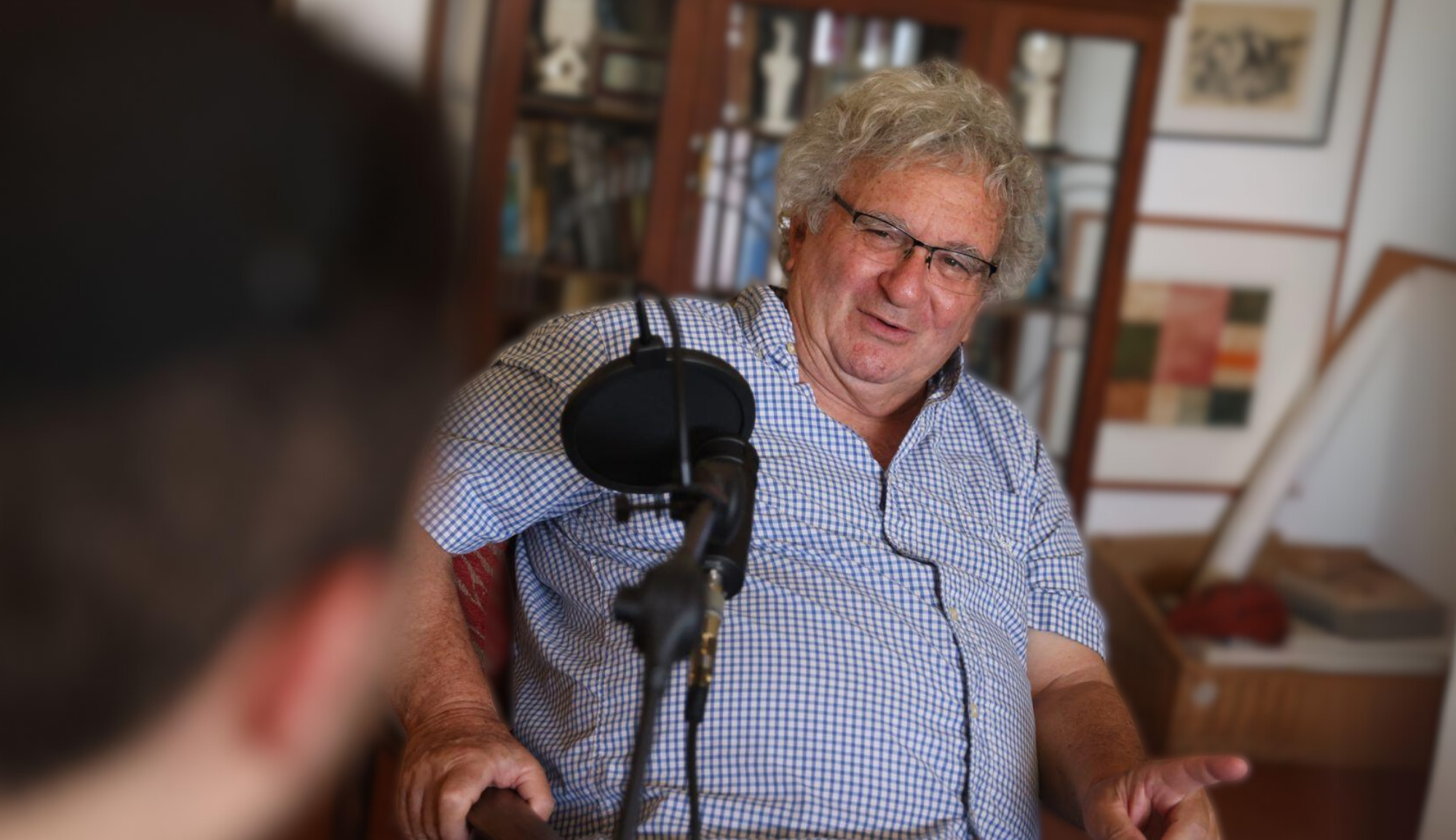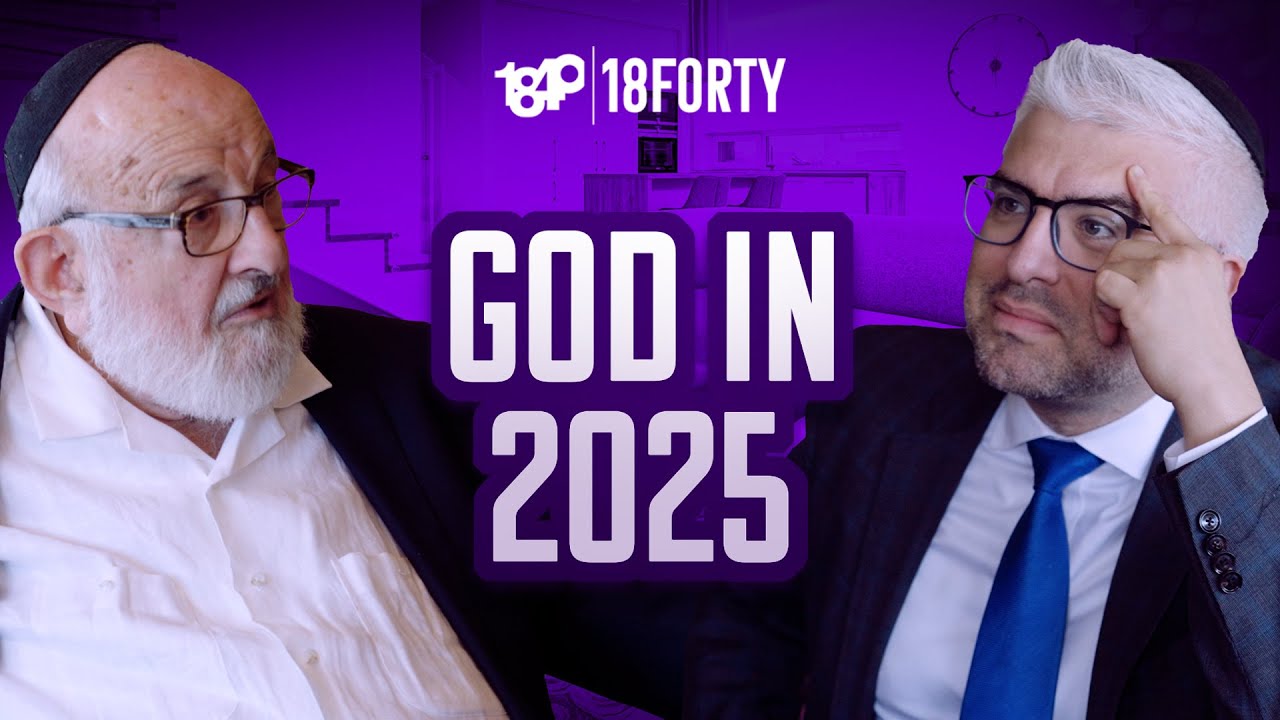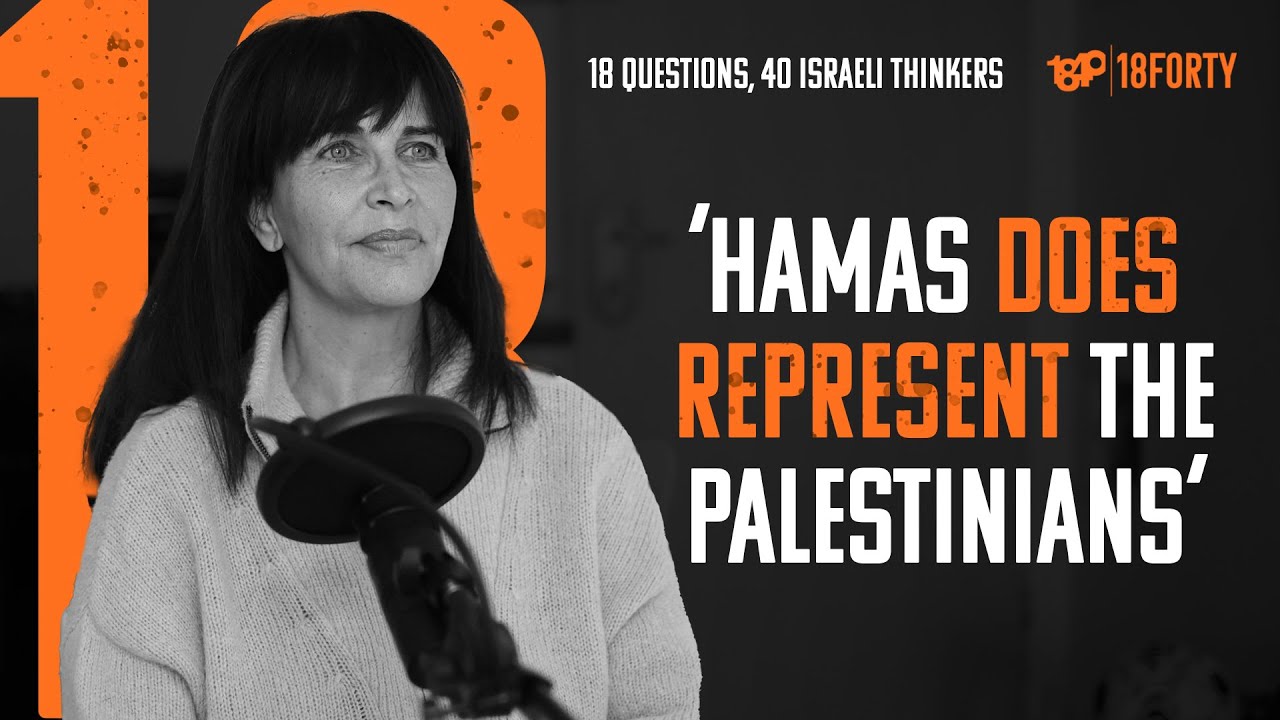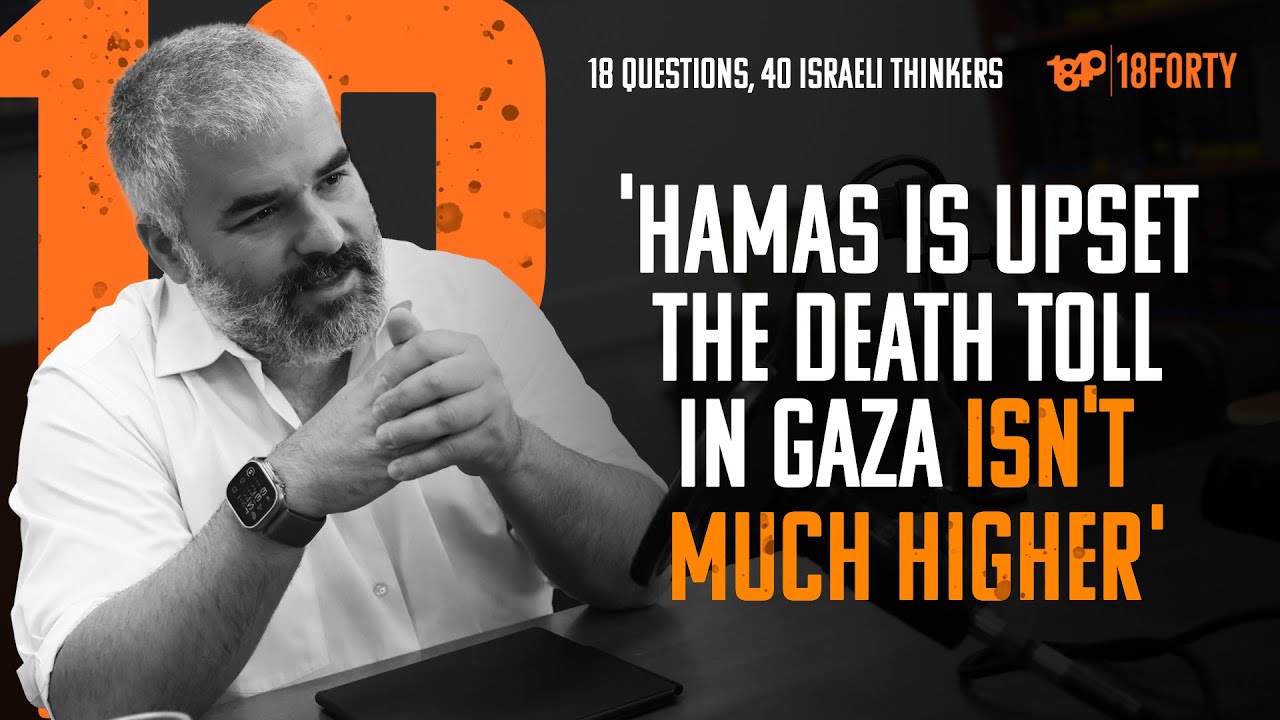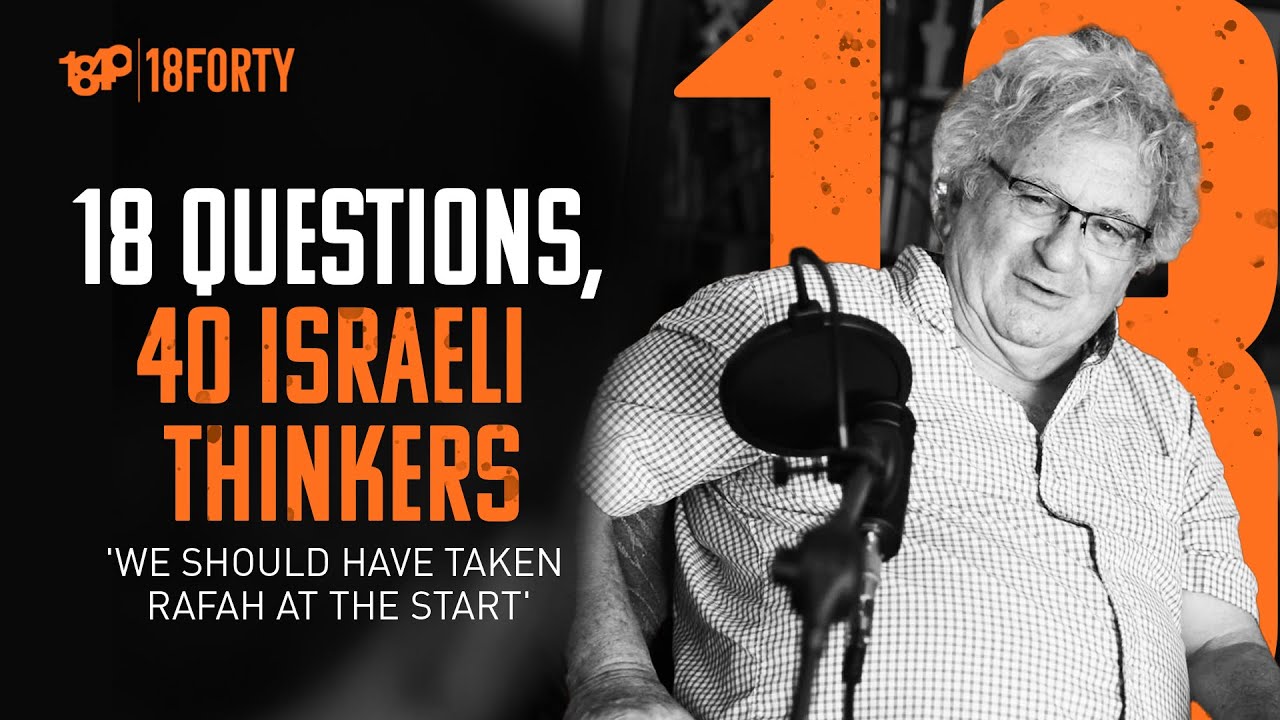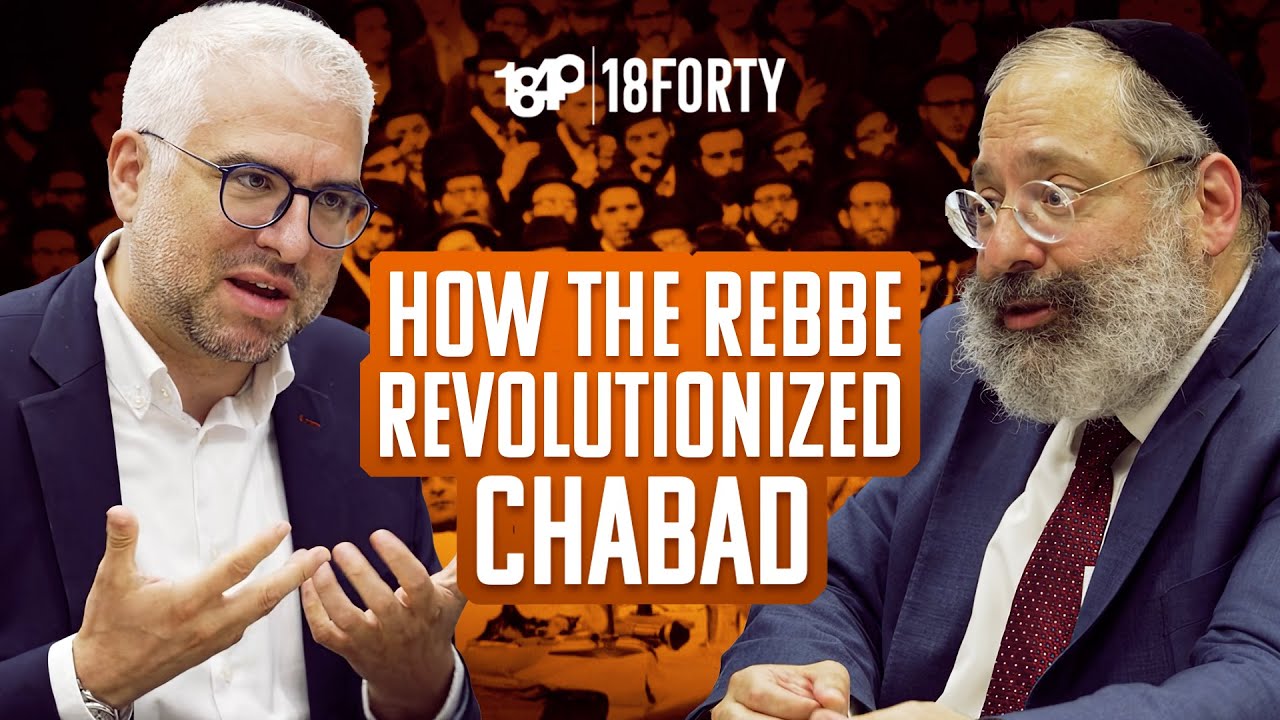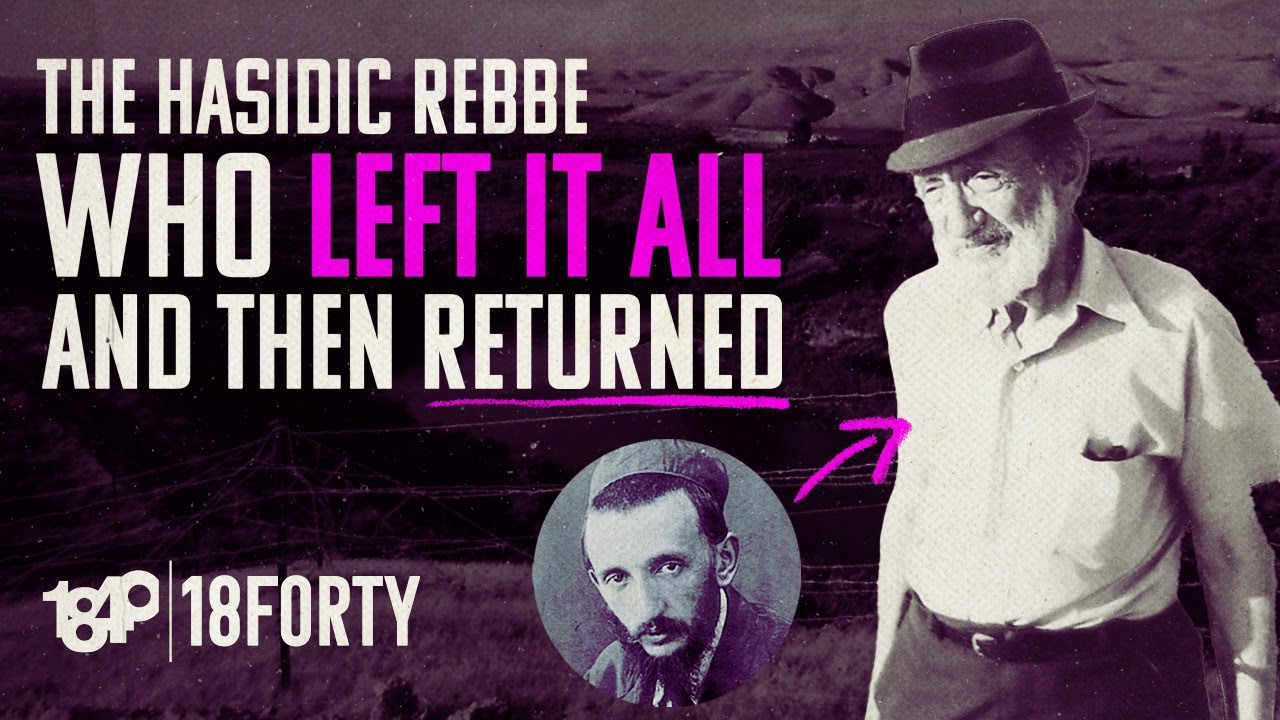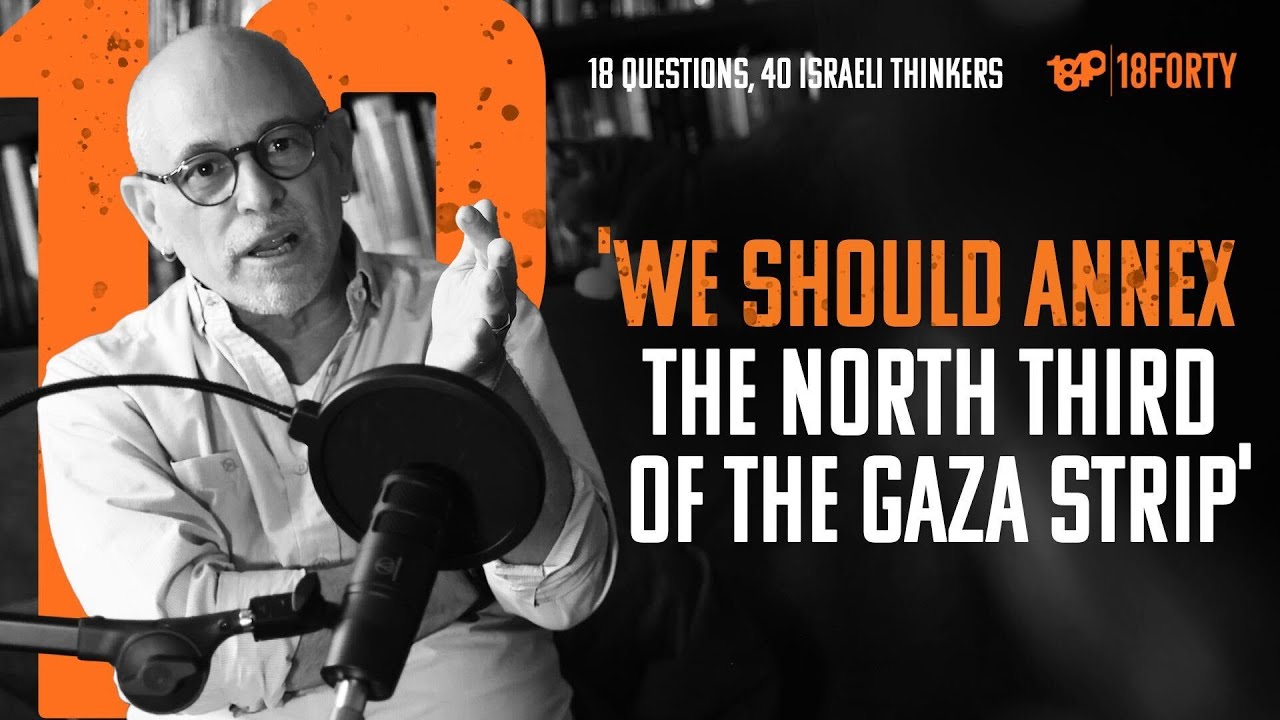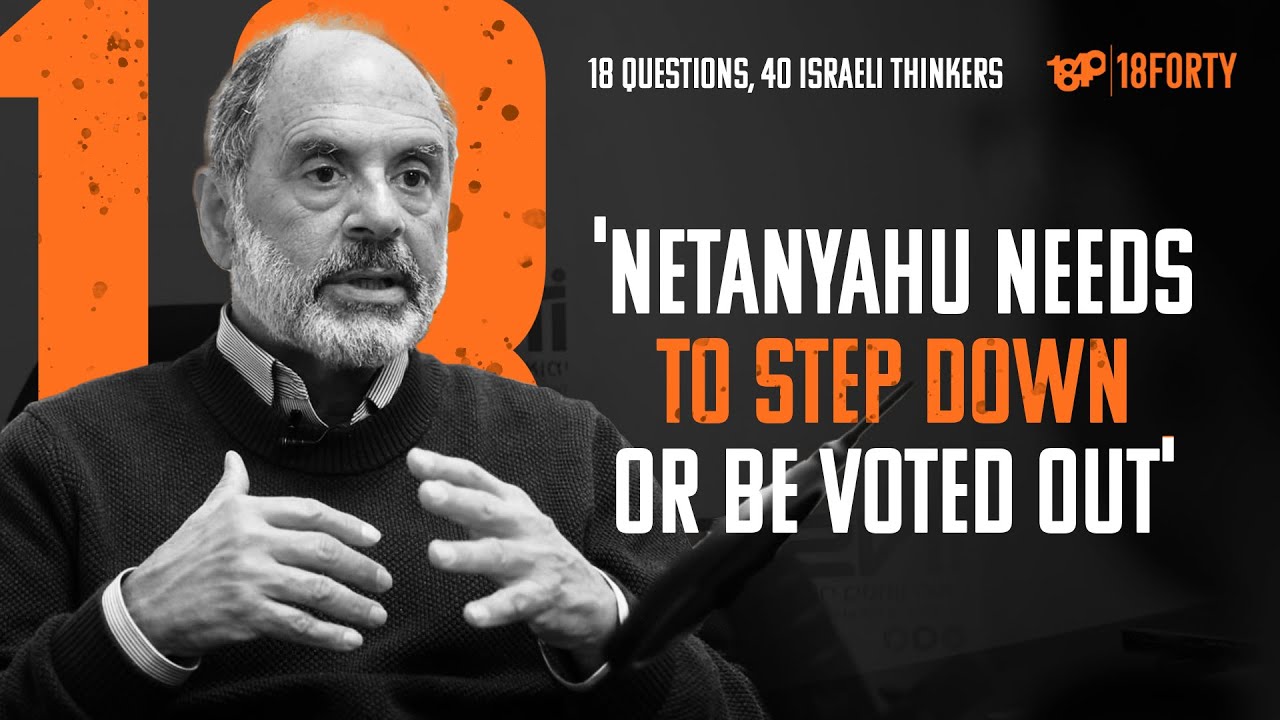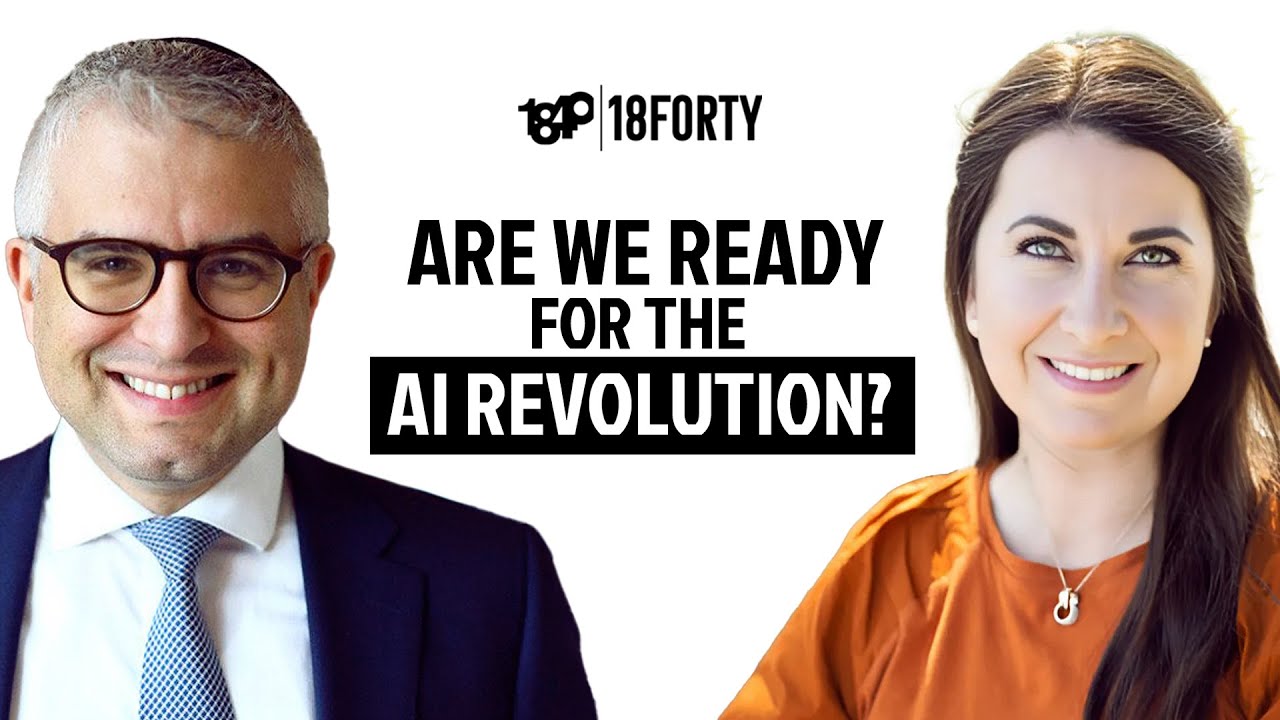Excerpted and adapted from Birth of the Spoken Word, by Dovid’l Weinberg. March 2020. Reprinted with permission. Receive a 20% discount when you order with code “18forty” through June 23.
“Everything in creation is distinct in its taste, smell, and appearance according to the combination of the letters in its name in the Holy Language. All of this was carefully weighed by the Holy One, blessed be He, in accordance with His absolute Will and Wisdom; that such and such letters should create one thing, while other letters should create a different thing… One who is wise can understand all of this.”
— Likkutei Moharan I, 19
The path to seeing creation as an exercise in communication—begins, well…it begins at the beginning. Students of chemistry and physics will tell you that, as of today, 118 individual elements have earned a coveted spot on the Periodic Table of the Elements. Any true understanding of how the natural world operates demands at least a rudimentary understanding of these elements and how they combine to create physical reality. But according to the Torah, there exists an even more elementary, metaphysical “table of the elements,” comprised of the twenty-two basic “particles” of reality, the letters of the Hebrew alphabet.
Prior to physical creation, Hashem conceived of the building blocks that would bridge the gap between the Nothingness (or, more precisely, the No-thing-ness) that reigned before existence, and the something that we call the cosmos.
After countless descents and reductions, these building blocks would finally arrive, taking form as the osios, or letters of the Hebrew Alef Beis. According to Jewish tradition, it is with these letters—from Alef through Tav—that the Ribbono Shel Olam continuously animates our physical reality at every moment, for “In His benevolence, He renews the act of creation constantly, every day” (see Birchos Kri’as Shema based on Chagigah 12b).
The Origin of Letters
Not surprisingly, the Ba’alei HaKabbalah (Masters of the Jewish Mystical tradition) discerned and spoke much of these letters. To wit, they were the ones who first identified them as the subatomic, vitalizing life-forces that animate all of creation. One of the earliest articulations of this idea can be found in the Sefer Yetzirah (2:5):
Hashem engraved, carved, cut, weighed, combined and transformed twenty-two foundational letters with which He fashioned the life-force of everything that has been created and everything that will be created in the future.
Surely, such an important part of the creation narrative ought to have been properly spoken of in the opening lines of Sefer Bereishis. Why, then, is there no mention of these letters at the beginning of the creation story?
In response to this question, several commentators of both early and later vintage have noted that the Torah is reticent to speak openly about matters that are not plainly understood by the average man (see Ibn Ezra, Devarim 32:39 and Ha’emek Davar, Bereshis 3:1). The Torah is “not in the heavens” (ibid. 30:12); it must be an “open book,” comprehensible to scholars and laymen alike.
Until very recently, most people simply would not be able to grasp the notion of a world built out of letters, and so the Torah remains virtually silent about them. I say “virtually,” because a significant allusion to the creation of these ethereal building blocks is subtly preserved within the subtext of the creation story. In fact, one need not look further than the very first pasuk of the Torah to find it.
א) בְּרֵאשִׁית בָּרָא אֱלֹקִים אֵת הַשָּׁמַיִם וְאֵת הָאָרֶץ: (ב) וְהָאָרֶץ הָיְתָה תֹהוּ וָבֹהוּ וְחשֶׁךְ עַל פְּנֵי תְהוֹם וְרוּחַ אֱלֹקִים מְרַחֶפֶת עַל פְּנֵי הַמָּיִם)
(1) When the Almighty began to create heaven and earth (2) and the earth was unformed and void, with darkness over the surface of the deep and a wind from the Almighty sweeping over the water.
In the collection Ohr Torah (Bereishis), a compilation of teachings from Rabbi Dov Ber of Mezeritch zy”a (1704-1772), the successor to the holy Ba’al Shem Tov zy”a (1698–1760), we are presented with the following secret:
It is known from the works of mystics that before anything else, the letters were created. Only afterwards did the Holy One, blessed be He, create the world. This is the secret of the first verse of the Torah, “Bereishis bara Elokim eis – In the beginning Hashem created eis (את),” which must be understood as an allusion to the letters Alef through Tav.
Another prominent student of the Ba’al Shem Tov, Rabbi Yaakov Yosef of Polanoya zy”a (1710-1784), retraced the origins of this teaching back to the Sefer Yetzirah, where the primordial letters were originally typecast as the life-blood of creation (Toldos Ya’akov Yosef, Bereishis, Os 1):
Just as there are twenty-two letters of Torah and tefillah, so it is with all material and physical matters of this world, for they too were created with the twenty-two letters…except that (with regard to material matters) the letters are enclothed within physical reality, covered by many layers, garments and husks; however, inside the letters rests the spiritual light of the Holy One, blessed be He.
Later, Rabbi Menachem Nachum Twersky, the famed Maggid of Chernobyl zy”a (1730-1787), noted that careful study of the opening verse of the Torah actually yields two sets of letters from Alef through Tav; namely, the heavenly Alef Beis and the earthly Alef Beis. His interpretation was preserved in his posthumously published Me’or Einayim (Bereishis):
In the beginning Hashem created the heavens (את השמים) and the earth (ואת הארץ). As a rule, the twenty-two letters of the Torah as they are given to us emanate from the twenty-two letters of the Supernal Torah, which contain its secrets… And this is the inner sense of the words, “In the beginning Hashem created eis (את) hashamayim,” meaning the twenty-two Supernal Letters from Alef until Tav; whereas “ve’eis (ואת) ha’aretz” corresponds to the twenty-two letters of the Torah as they have been revealed to us down here below.
In the Torah’s opening salvo, then, we already come face-to-face with the Almighty’s metaphysical “Periodic Table of the Elements,” the twenty-two letters of the Hebrew Alef Beis. Because this idea may still seem a bit too “in the heavens,” however, let us see if we can bring it down to earth with a story.
A Picture is Worth a Thousand Words
I once came across an ad for a camera in the Columbus International Airport. The poster depicted a poignant scene of a young boy and his father fishing on a picturesque lake that was surrounded by lush forest. The scene was pretty enough, but what drew my attention to the advertisement was something else: upon closer inspection, every detail of the colorful landscape was composed of letters and words.
The boy, his father, their fishing boat, the water, the trees and even a few birds flying overhead in the background were made up of the letters that spell out b-o-y, b-o-a-t, t-r-e-e and b-i-r-d, respectively. The basic idea that the ad was trying to convey, that “a picture is worth a thousand words,” was certainly a good marketing campaign; but, it also inadvertently reflected a profound truth. Indeed, the world is built on letters.
I smiled at the ad, as it reminded me of a story about the Alter Rebbe of Lubavitch, and the events that took place on one of his last days on earth:
Shortly before his passing, the Alter Rebbe summoned his grandson, Menachem Mendel, to his bedside. Pointing to the beams on the ceiling, the Rebbe asked his grandson, “Mende’le, what do you see?” The young boy answered innocently that he simply saw the support beams of the roof of the house. His grandfather confided in him, “Mendel, I want you to know and believe me when I tell you this. I no longer see the beams of the ceiling. As my soul fights to free itself from the confines of my body, all I can see are the letters kuf-vav-reish-hei, the Hebrew letters that make up the Hebrew word koreh, or beam. When I look at the table, I see shin-vav-lamed-ches-nun, the letters that make up the Hebrew word shulchan, or table. And Mendel… Ah, Mende’le when I look at you, all I see are the letters that make up your name, Menachem Mendel.”
But the domiciles of the righteous, their ceiling beams and dining room tables, do not possess a monopoly over these osios. To be sure, despite our limited capacity to perceive this cryptographic reality, it would be a mistake to dismiss the above account as some supernatural fairy tale or the fantastical visionary experience of a pious man in his final hours.
Quite the contrary, all around us letters generate our reality and, as peculiar as it sounds, it is our choice whether or not we choose to “see” them. As these letters turn into words, then sentences and, ultimately, a complete thought, they weave the beautiful tapestry that unfolds into a single moment of human experience. Verily, they are the string of code, the algorithm that manufactures the kaleidoscopic experience we call Life.
Drawing Insight from a Decoded Reality
Fortunately, despite the seemingly esoteric nature of this idea, recent advances in a host of fields—including information technologies, artificial intelligence, and even the decoding of the human genome—can help us understand the notion of a letter-based world.
There is a strong precedent for drawing spiritual insight from the industrial innovations of the day. The Chofetz Chaim, for example, was inclined to explain that developments in the realm of the applied sciences serve to reinforce matters of faith (see Sheim Olam pp. 180-183). The tape recorder and camera, to name a few choice examples, have been instrumental in bolstering our grasp of the Mishnah in Pirkei Avos (2:1): “Know what is above you: an eye that sees, an ear that hears, and all of your actions are written in a book!”
Imagine trying to explain to a Jew living in the 1400’s that, one day, we will see with our own eyes that it is possible to capture our every waking movement on something called “film,” or that a private conversation between two business partners may be surreptitiously recorded on “tape,” “CD,” and now, “digital memory,” only to be played back months later in a court of law, landing both of them in a federal penitentiary. In terms of man’s ability to create such machines, the idea would have been laughable.
But as the long galus carried on, and our simple faith in the notion of an all-seeing, all-hearing, all-powerful God began to erode, Hashem inspired man to create devices that would demonstrate the ease with which movement and sound can be captured and stored for future viewing or listening. Conventional thinking now dictates: if man can create such technology, certainly He who created man has the means to “see,” “hear,” and “write” all of our actions in a “book.”
In the same vein, recent developments in computer coding and DNA decoding make it easier for us to think of our reality as the three-dimensional output of a letter-based coding interface. Just as the pictures on a computer screen or digital camera are graphic expressions of a long string of coded software, the world as we experience it with each of our five senses, is, in reality, an output of the letters of the Alef Beis arriving from beyond this finite, physical world.
It is fitting to speak of the letters as “arriving” based on a teaching of the Alter Rebbe of Lubavitch, Rabbi Shneur Zalman of Liadi zy”a. The Rebbe taught that the word “os” (אות), meaning “letter,” shares a root with the Aramaic word “osa” (אתא), “to arrive,” because everything in creation arrives from somewhere beyond (see his Torah Ohr, Mikeitz). But that somewhere, it turns out, is actually a Someone, and that Someone is constantly weaving particles of physical matter out of the primordial letters of creation because He wants to have a relationship with you.
Climbing the Letter-Ladder
For centuries, our Sages chose to identify the most elemental forces in creation as “the twenty-two letters of the Alef Beis.” But why? This was long before we knew how to speak of “code” or “software.” If so, what were they trying to convey? Wouldn’t it have made more sense to speak of creation as emanating from some other materia prima, as did the alchemists or the Greek philosophers?
Once we acknowledge, however, that letters inform the rudimentary phonemes of speech (the basic building blocks of all conversation), we will have no trouble understanding their intention.
To be sure, describing the Divine medium for creation in terms that are evocative of human communication is a radical statement about the nature of our purpose here on Earth. Declaring that the universe is animated by letters is just another way of saying that physical creation is Hashem’s bid at conversation with us, and that He is daring us to climb the letter-ladder of creation which leads back up to Him. In a way, then, the opening verse of the Torah—the creation of the eis (א-ת) of the heavens, and the eis (א-ת) of the earth—seems to be suggesting that our every interaction with Hashem’s World, is, in reality, an interaction with Hashem’s Word.
The World is Filled with Ways to Possess Him
The genuine aim of the first chapter of Sefer Bereishis, then, is to set the stage for what is about to come. As each of the Ten Utterances is spoken, the ethereal speech of the Holy Ancient One gives way to physical reality—light and darkness, sky and oceans, mountains and valleys, grasses and trees, birds and bees, fish and a wide array of wild and domesticated animals. Each of these is another potential point of connection between the Creator and His world.
The words of the celebrated tzaddik, Rabbi Simcha Bunim of Pershischa zy”a (1765-1827), come to mind. In the posthumously published collection entitled Kol Simcha (Tehillim 104, Os #2), we find a novel interpretation of the verse from Psalms, “Malah ha’aretz kinyanecha – the world is filled with Your possessions” (ibid. 104:24). Generally, the pasuk is taken to mean that the world and all that fills it are, in truth, the private property or personal effects of the Almighty. After all, every manner of form and substance ultimately belongs to the Creator.
As the Rebbe sees it, however, the words, “Malah ha’aretz kinyanecha – the world is filled with Your possessions,” also mean something more: “The world is filled with countless ways to possess You.” Creation does not merely belong to Hashem; it leads us back to Him. Every molecule in creation beckons us to a relationship—or rather, The Relationship—waiting to be possessed.
An Exercise in Communication
It is abundantly clear that most people do not experience this mode of thinking on a daily basis. In fact, man’s indifference to this outlook is probably what motivated the Ba’alei HaKabbalah to blur the lines between physical reality and speech in the first place. Knowing that most people relate to their possessions as mere material assets, the Sages felt compelled to expose the linguistic root of all of our “stuff.” They wanted us to consider that, as corporeal as this stuff may sometimes feel, it is actually Hashem’s way of offering us a chance to communicate with Him.
Let’s try an exercise. Reflect for a moment upon the simple experience of drinking a cup of water. Taken at face value, this pleasant, if commonplace, occurrence will register as little more than an exercise in proper hydration maintenance, a rather routine bodily function. On the other hand, when we view creation as a conversation, even menial activities, like eating or drinking water, reveal themselves as meaningful interactions with Hashem. While it is your body that alleges to be hungry or thirsty, in reality, it is your soul’s longing for the “devar Hashem – the word of God,” contained within the food or water that truly moves you. Indeed, “Not on bread alone does man live; but by the force of each word that emanates from Hashem’s mouth does man live.” (Devarim 8:3).
How wonderful it is to stop and reflect upon our hands, holding a cup of water. Picture the plastic bottle that the water was stored in until it was poured into the cup; now the box in which the bottle was transported (it was a 24 pack); and the truck that was used to drive the box and hundreds more like it to the store; and the combustion of the engine; and the driver of the truck, etc. All of these exist only by dint of the Divine vitality flowing through each molecule of water, plastic, cardboard, metal, skin and bones.
At this point, if we recall that the entire experience unfolding before us is being driven by a precise combination of the twenty-two letters of the Alef Beis, will we not be moved to engage Hashem in conversation as a result of this water? Letters, after all, are the basic building blocks of conversation, and since He is talking to us—creating this experience with the utterances of His mouth—are we not eager to reply to Him?
As we lift the cup to our parched lips, halachah urges us to respond to the Almighty, to sanctify the experience as we pronounce the words: “Blessed are You, Hashem, our God, the King of the Universe, Who created everything with His Word.”
While this meditation serves as a solitary exercise, it is easy to see how, with a bit of practice, all of life’s trivialities can be transformed—or, more precisely, revealed—as profound Divine communications.
Hashem’s Enduring Speech
To help put the finishing touches on our portrait of a world built out of letters, let us turn to the section of the Sefer HaTanya called Sha’ar HaYichud VehaEmunah (Chapter 1), where the Alter Rebbe zy”a records a central teaching of the Ba’al Shem Tov zy”a:
It is written, “Forever, Hashem, Your word stands firmly in the heavens” (Tehillim 119:98). The Ba’al Shem Tov of blessed memory, explained that “Your word,” which you stated: “Let there be a firmament in the midst of the waters, etc.” (Bereishis 1:6), these exact words and letters stand firmly forever within the firmament of heaven and are forever enclothed within all of the heavens to enliven them, as it is written, “And the word of our God shall stand firm forever” (Yeshayahu 40:8), and similarly “His words are alive and established forever.”
For if the letters were to depart for an instant, Heaven forbid, and return to their source, all of the heavens would become naught and absolute nothingness, and it would be as though they had never existed at all, exactly as before the utterance, “Let there be a firmament.” And so it is with all created things, in all the upper and lower worlds.
And even regarding this physical earth and the realm of the completely inorganic, if the letters of the Ten Utterances by which the earth was created during the Six Days of Creation were to depart from it for an instant, Heaven forbid, it would revert to naught and absolute nothingness, exactly as it was before the Six Days of Creation.
Throughout the first five and a half days of creation, Hashem plants these elemental seeds and waits for them to blossom into nature’s yearning for Divine discourse. And yet, as the creative process nears its end, and the twenty-two letters settle into their respective places, there is still one formidable hurdle to overcome.
Sure, the cosmos is now filled with an impressive array of both organic and inorganic matter; but, for all their sophistication and grandeur, not even one possessed the basic prerequisite for participating in a conversation with Hashem—namely, independent, conscious, communicative speech. It is true that the letters of creation suggest a Divine appeal to dialogue. But, with whom should this conversation take place?
Enter man.
